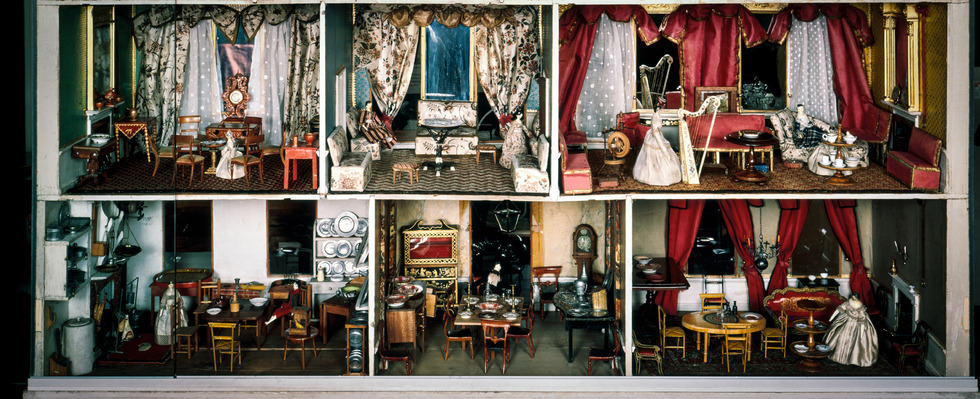Of Holiness and Housing: The Catholic Family vs The Property Market
Antonia Robinson FAITH MAGAZINE November - December 2014
The Home Front
I live in a “post-1930 Lambeth Conference house”: a large, detached house optimised for the idealised family of the birth-control era: Mum, Dad and two children (preferably a boy and a girl). It’s a lovely house with glorious gardens, but its two single and two double bedrooms are ill-suited to our household of seven (plus menagerie), so with some sadness we are selling.
Searching for a new home has put the tension between the priorities of the housing market and the needs of a large family into stark relief. Just as many attractions consider a “family ticket” to mean two adults and two children, so houses have been built to accommodate the perceived norm of their time.
Contemporary houses in Britain are rarely built with large families in mind, yet it is not uncommon to find a new “executive” home with several reception rooms, a home cinema, a gym … but only three bedrooms (all en-suite). Even older properties originally intended for large households are frequently modified: a six-bedroom house becomes three bedrooms with four bathrooms. Why?
The UK birthrate is currently 1.64. The divorce rate is 42 per cent, and the unmarried relationship break-up rate even higher. The British are living in smaller households, and houses are being built – and altered – accordingly.
“Large family homes” are being modified to suit smaller families. Ninety years ago the average new house had four bedrooms and was more than 1,600 square feet. Today it’s two-thirds of that size and, in estate agency speak, “boasts” only three bedrooms.
In the south-east of England the average house costs £320,000 (£485,000 in London) and the average salary is £28,000 (£34,000 in London). While property is relatively more affordable in other parts of the country (six times the average salary in the North-east rather than 14 times in London) it’s impossible to ignore that even in the most affordable areas house prices are geared towards two-earner families with two or fewer children.
A 2006 study found that houses with three or more bedrooms made up less than one-fifth of new houses built, compared with more than a third 10 years earlier. Another study estimated that 150,000 children are living in bedrooms created by DIY partitioning of another room (tip: they’d probably prefer the larder or airing cupboard).
Catholic families are disproportionately affected by the difficulties of the housing market, particularly those families with one working parent in a housing market where prices are geared towards a two-salary model. Faithful Catholic families, even more so those blessed with many children, are never average and do not fit into the average home. So what do they do?
The first thing is they pray. God provides. He opens our eyes to things that we, in our human frailty, didn’t think were possible. Like what? Like location: the starting point isn’t “where would we like to live”, but rather criteria such as access to a good priest and, of course, enough space to maintain family harmony. I’ve met growing families who have moved from leafy streets to ex-council houses in “bad” areas in order to get more space, but who became happy, safe and knitted into their new community.
This isn’t a call to move into sink estates, but a reminder that the same values that cause us to “think outside the box” when it comes to family size and lifestyle must also come into play when considering where to live. I’ve known families who have had to manage the incredulity of non-Catholic friends and family after “admitting” that the reason for a move to a less “highly sought after” area is to be closer to a good priest. Being open to God’s call means rejecting post-code vanity.
“Catholic families are disproportionately affected by the difficulties of the housing market, particularly those families with only one working parent”
Then there are our perceptions of the space we “need”. Triple bunk beds may be great when children are small, but once those sweet-smelling toddlers have become angular teenagers craving privacy, sharing a box room becomes difficult. Fortunately, children tend to be adaptable and often love quirky spaces, and families invent ingenious solutions – loft rooms up ladders, partition walls, caravans in gardens – to create extra space. The youngest son of one large family I know bedded down in a (former) large cupboard, not much bigger than a single mattress in floor space. When a departing elder sibling freed up a “proper” bedroom he refused to move: he loved his cubbyhole.
Time flies. Parents of large families in which older children have already moved on to adult life report a “squash and a squeeze” effect where each child’s birth makes the house a little less bearable until breaking point is almost reached… then older children spend the day at school, then they’re off to university and adult life, and slowly the house becomes almost unbearably large.
And so our search continues. It’s difficult trying to balance our Catholic criteria in an environment where there’s a plethora of houses that would be perfectly good for any normal (read: non-Catholic) families. We’ll continue to pray to St Joseph, but we’ll also continue to learn from other Catholic families going through the same challenge; it’s not about buying the dream home, it’s about doing the right thing.
Antonia Robinson is a home-educating mother of four and lives in London.


